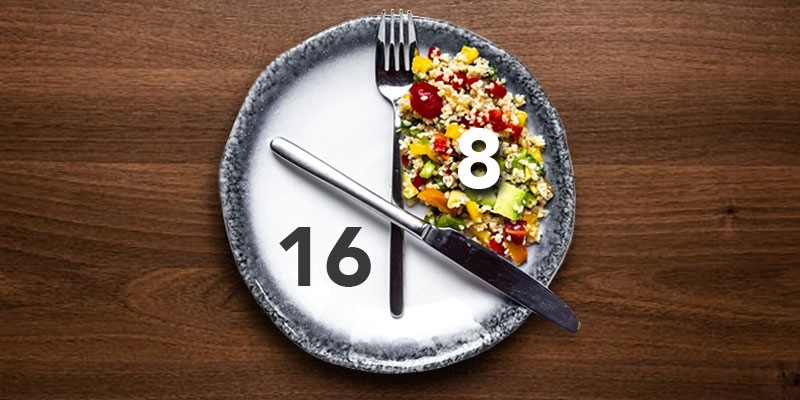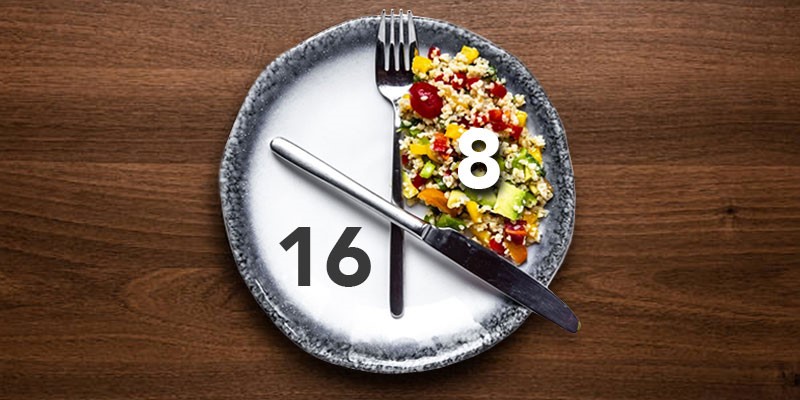What is intermittent fasting?


Photo: Active Health
Fasting has been around for centuries and is practised by many cultures and religions. Religious fasts are common amongst the Muslims, Hindus, Buddhists and Christians. Some religions practise abstinence from particular foods, others fast for certain periods of time or days.
In recent times, there is a growing diet fad in the past decade that has taken its own spin on fasting. It is more widely known as intermittent fasting and has gained popularity amongst health enthusiasts. Famous individuals who advocate this diet include Hugh Jackman, Terry Crews, Chris Hemsworth, Kourtney Kardashian, Jennifer Lopez, and the list goes on.
Intermittent fasting is in no way starving one self. Instead, it is a diet schedule that involves alternating cycles of voluntary abstinence from food and drinks. Some intermittent fasting plans do not restrict the type of food to consume during non-fasting period, but making healthy food choices during the non-fasting window has shown to be the most beneficial.
Types of intermittent fasting

Photo: Active Health
There are different types of intermittent fasting. Commonly practised fasts include time-restricted fasting, alternate-day fasting and modified fasting.
Time-restricted fasting usually sees a prolonged nighttime fast. A very popular example of time-restricted fasting is the 16:8 method. Individuals will fast for 16 hours overnight, leaving an 8-hour window in the day for them to eat normally. Some choose to skip breakfast, consuming only lunch and dinner. Others choose to consume breakfast and lunch, giving dinner a miss.
Alternate-day fasting as the name implies, means alternating between days of fasting and days of eating. On fasting days, one does not eat or drink anything with calories. Only non-caloric drinks like water and non-sugar coffee or tea are allowed to be taken. On non-fasting days, you may eat whatever you want.
Modified fasting involves consuming very little on fasting days. One popular method is the 5:2 diet where the individual fasts for 2 days in a week and eat normally for the remaining 5 days. For the 5:2 fast, individuals will consume 20 - 25% of daily needs which works out to 500 - 600 kcal for females and males respectively. Sometimes the 4:3 method is adopted, depending on the individual�s preference.
Benefits of intermittent fasting

Photo: Active Health
The most highly sought-after benefit of intermittent fasting is effective weight loss and fat mass loss. When a person fasts for more than 12 hours, the body�s blood sugar depletes and the body then turns to its next readily available energy source, which is stored fat. It metabolises its fat reserves in order to continue producing the energy it needs. Scientists term this as �flipping the metabolic switch�, where the body�s preference has turned from using glucose to the oxidation of fatty acids. The amount of calories consumed are also reduced due to a shortened eating window.
Many studies have found that intermittent fasting is useful in pre-diabetic individuals. Fasting for more than 12 hours keeps blood sugar levels low and improves insulin sensitivity, thus lowering the risk or even improving early forms of diabetes.
Emerging studies have also suggested that the central nervous system is boosted through intermittent fasting. There is growing research suggesting that intermittent fasting is positively correlated with increased levels of brain-derived neurotrophic factor (BDNF) which improves learning and memory by stimulating the new brain cells and synapses (the connection between two nerves).
Finally, intermittent fasting appears to have positive effects on the microorganisms in the human�s gut. Gastrointestinal functions follow circadian (sleep-wake) rhythm, such as gastric emptying and gastric blood flow being more active during the daytime. �A chronically disturbed circadian profile may reduce gastrointestinal function and impair metabolism and health.� Intermittent fasting limits excessive digestive activity during the nighttime. This helps to reset and regulate the gut microflora and its environment.
With so many desired outcomes from intermittent fasting, you might be wondering if there are any side effects.
On the flip side

Photo: Active Health
Intermittent fasting is not a one-size fits all approach. The drop-out rate can be as high as 38% and some people find this diet plan not easy adhere to. Furthermore, it is not superior to a diet that restricts daily calories (continuous calorie restriction).
People fuel themselves with unhealthy foods such as pizza, cakes and fried foods, on non-fasting days/eating windows. It is highly recommended to opt for nutrient-dense food choices like whole-grains, lean meats, fish, fruits and vegetables.
Some reported side effects include persistent hunger, cold, irritability, low energy, distraction and lower work performance. Other individuals who experience more serious symptoms like hair loss, irregular or missed periods, insomnia, anxiety or depression should cease and avoid it. If you do experience any of these side effects, it could be a sign to quit the intermittent fasting plan.
Intermittent fasting is not suitable for everyone, particularly those at risk or have a history of disordered eating like anorexia or bulimia.
Women who are family-planning, pregnant or breast-feeding should not practise intermittent fasting. Their bodies need as much nutrients, minerals and vitamins in order to support a developing foetus or to breast feed.
Another group who may not be suited for intermittent fasting are individuals with advanced diabetes and are on medications.
Things to take note of when intermittent fasting

Photo: Active Health
No diet works for everyone, therefore it is strongly advised that you seek medical advice before intermittent fasting if you are not in the best of health or you experience any of the aforementioned side effects.
Consume nutrient-dense foods, and not merely high-calorie foods. Include wholegrains, lean meats, fruits and vegetables to ensure adequate intake of macro- and micronutrients. Remember to stay hydrated as well, given that there are fewer meal occasions and long periods between meals.
If you would like to gain more insights, join the FREE Active Health Nutrition Workshops at any of our 8 Active Health Labs located islandwide. Alternatively, you may speak to your doctor or dietitian for tailored advice and recommendations.





![ActiveSG Academies and Clubs Logo (Solid Colour)[8647]](https://www.activesgcircle.gov.sg/hs-fs/hubfs/ActiveSG%20Circle%202023Theme/images/ActiveSG%20Academies%20and%20Clubs%20Logo%20(Solid%20Colour)%5B8647%5D.png?width=150&height=65&name=ActiveSG%20Academies%20and%20Clubs%20Logo%20(Solid%20Colour)%5B8647%5D.png)




-01.png?width=200&height=141&name=Team%20Singapore%20Logo%20(Red)-01.png)






.webp?width=120&height=120&name=Seniors%20Sports%20Day%2c%20Photo%20Credit%20-%20Sport%20Singapore%20(5).webp)



.png?width=162&height=162&name=New%20Project%20(1).png)